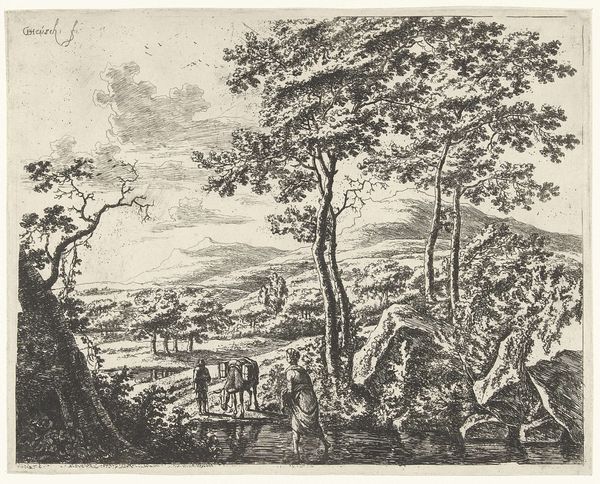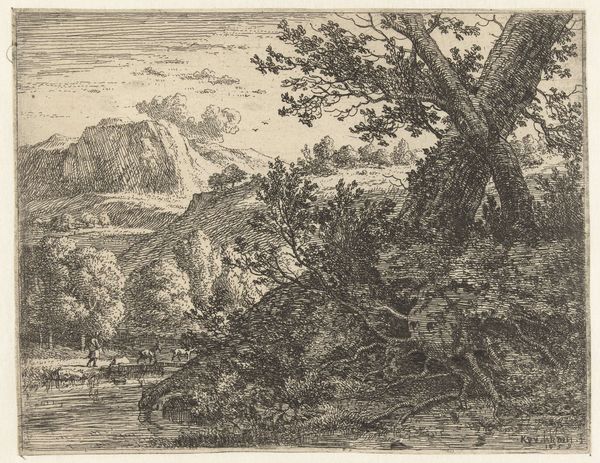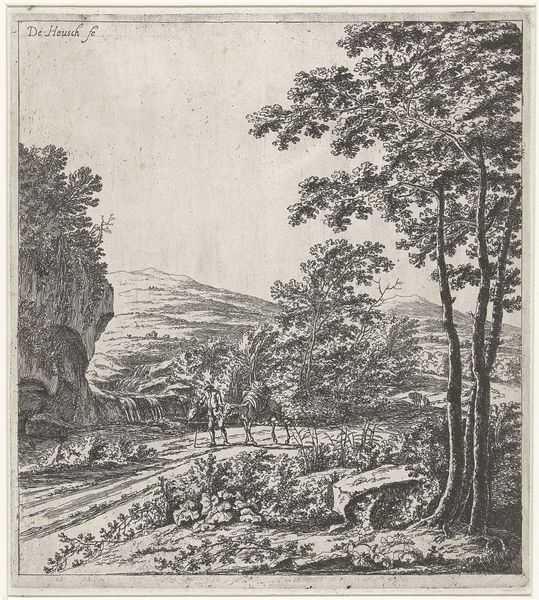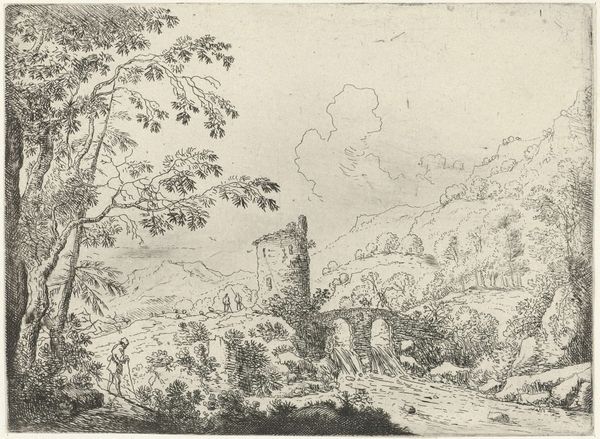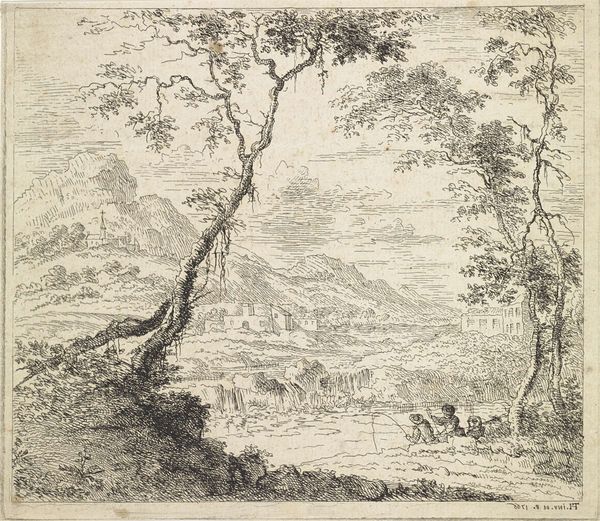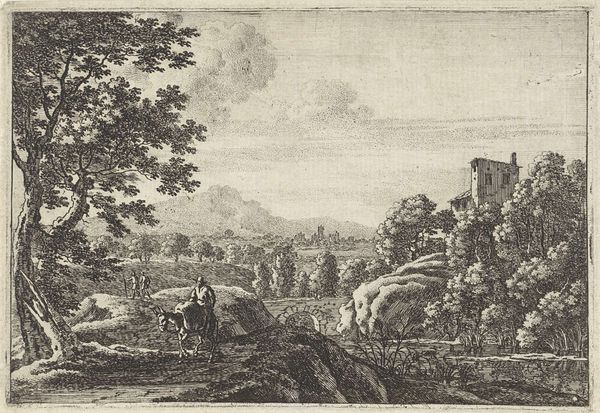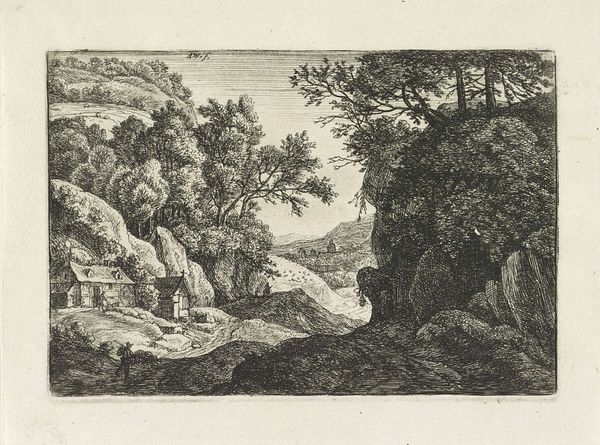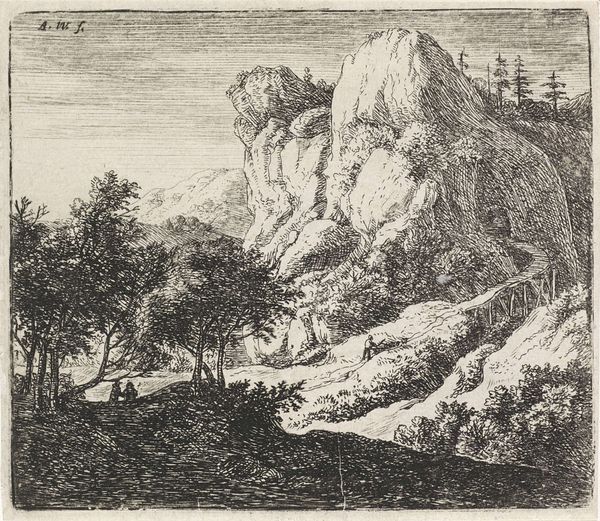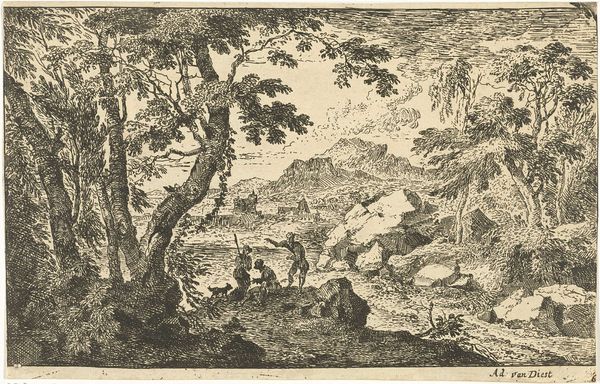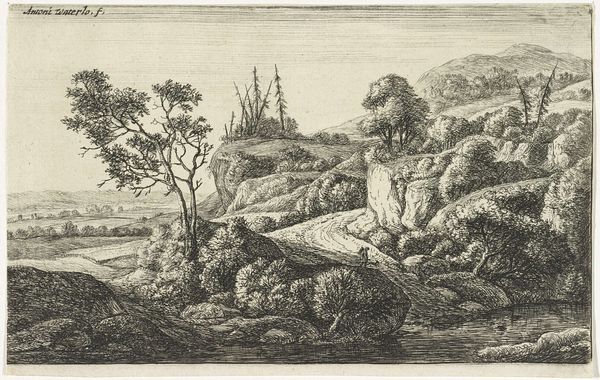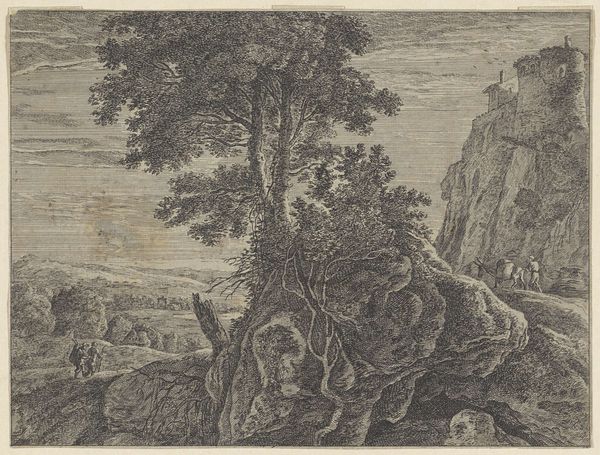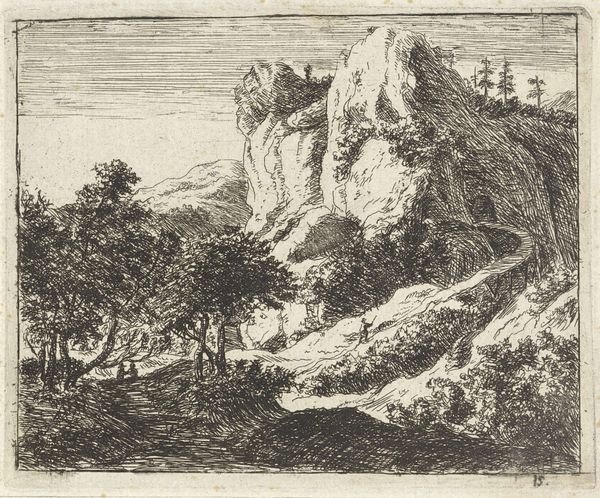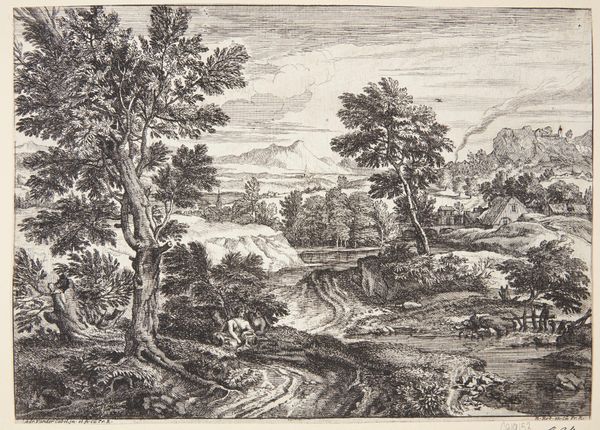
drawing, etching, ink
#
drawing
#
baroque
#
pen drawing
#
etching
#
landscape
#
figuration
#
ink
#
rock
#
mountain
Dimensions: height 137 mm, width 168 mm
Copyright: Rijks Museum: Open Domain
Curator: This is Willem de Heusch's "Landscape with Shepherd and his Flock," dating approximately from 1635 to 1692, rendered with ink and etching techniques. What strikes you about it initially? Editor: It feels surprisingly tranquil, almost melancholic. The dense hatching creates a lot of textural variety. The composition leads my eye back to the distant mountains, a hazy promise of the unknown. Curator: Indeed, that's a defining aspect of pastoral landscapes like these: a constructed ideal. The shepherd is an age-old symbol – leader and protector, isn't he? Often linked to the divine, but here the figure feels integrated in a way. He belongs completely. Editor: He certainly does, but is that also emphasized through contrast with the dramatic rock formation on the right? Such steep lines draw the eye up against all the gentler foliage everywhere else. Is there a symbolic interplay between cultivated versus wild nature? Curator: Absolutely! The rocky outcrop mirrors the jagged contours of the mountains in the distance, reminding us of untamed nature lurking just beyond the cultivated fields. Note how the tree acts as a framing element, almost mediating these oppositional spaces. The whole arrangement might be construed as humanity at peace, though slightly precarious given the shadow. Editor: A fitting symbol for the Baroque period. There's that balance – serenity tempered by awareness of nature's powerful unpredictability. This interplay enriches an otherwise simplistic genre scene. How effectively de Heusch manages to capture so much nuance within a drawing! Curator: Consider also, these carefully etched lines. In some way, landscape is already so closely linked to cultural ideas of national identity. Every curve signifies a constructed relationship between the Dutch and nature at this point in time, a memory being formalized. Editor: True, and by employing pen and ink, this intimacy almost feels like a private record, made available to a fortunate viewer to read, ponder, and keep close as a symbol. Curator: That’s wonderfully put. The enduring appeal, I suspect, rests on this convergence between familiar and idealized views on man in nature.
Comments
No comments
Be the first to comment and join the conversation on the ultimate creative platform.
